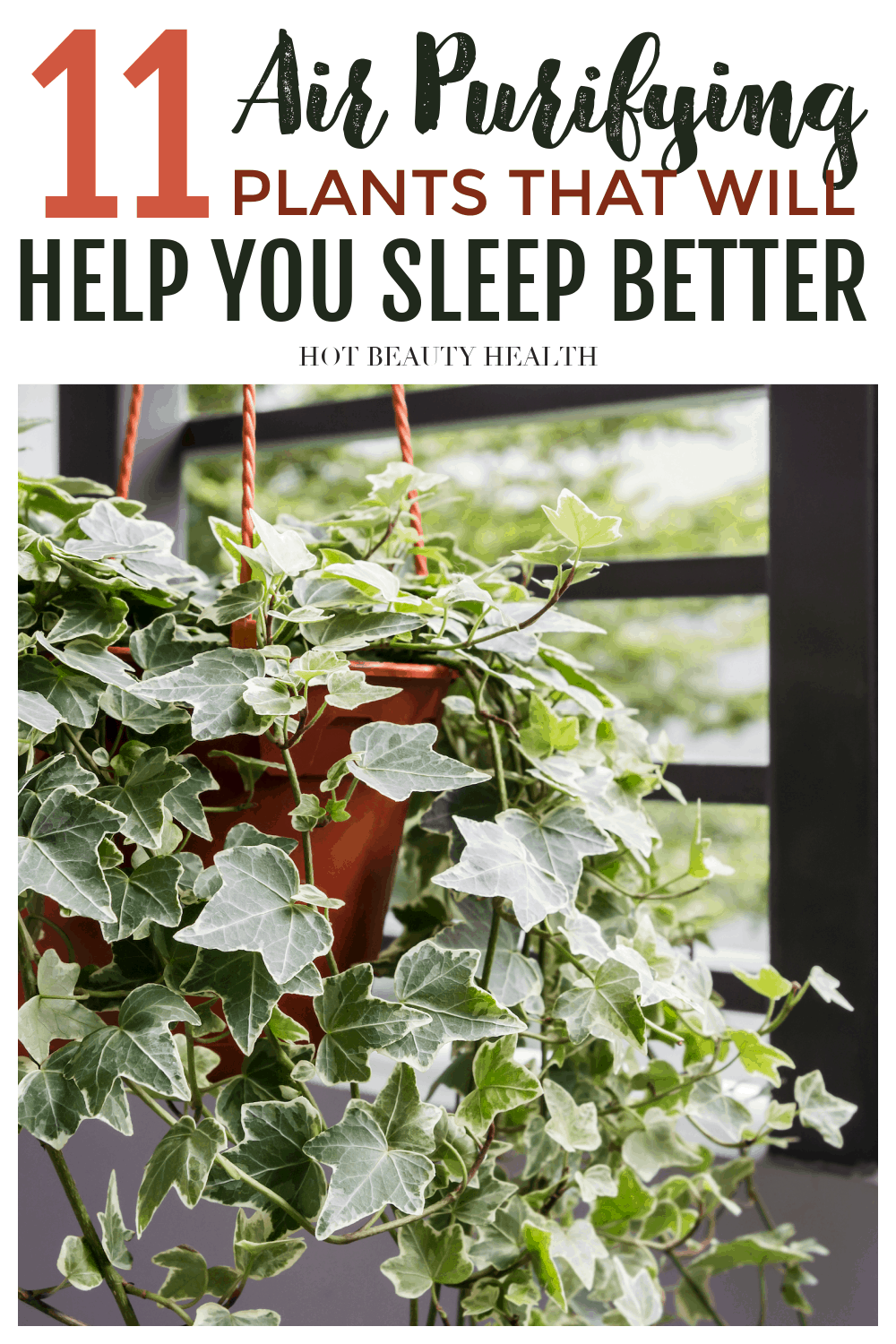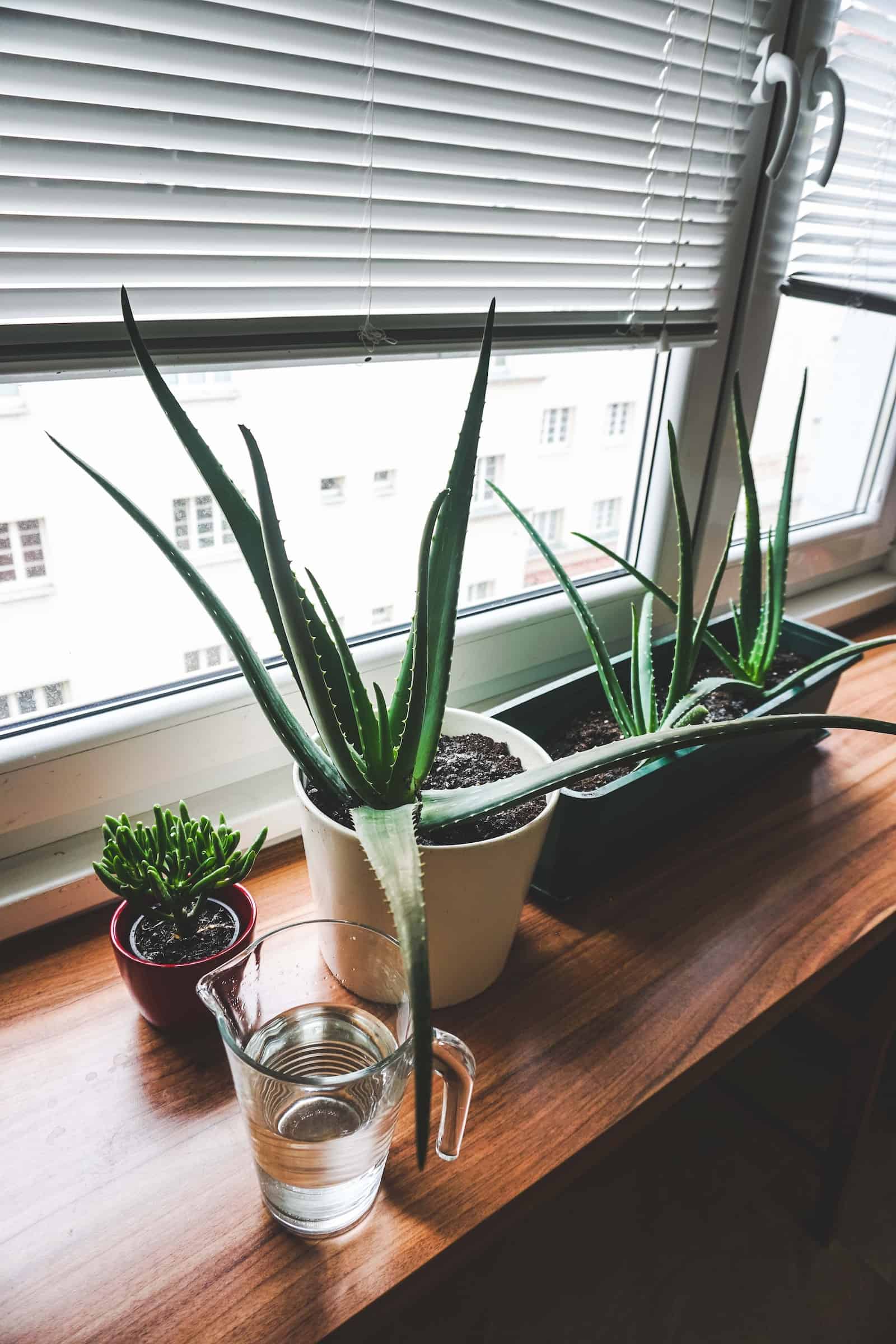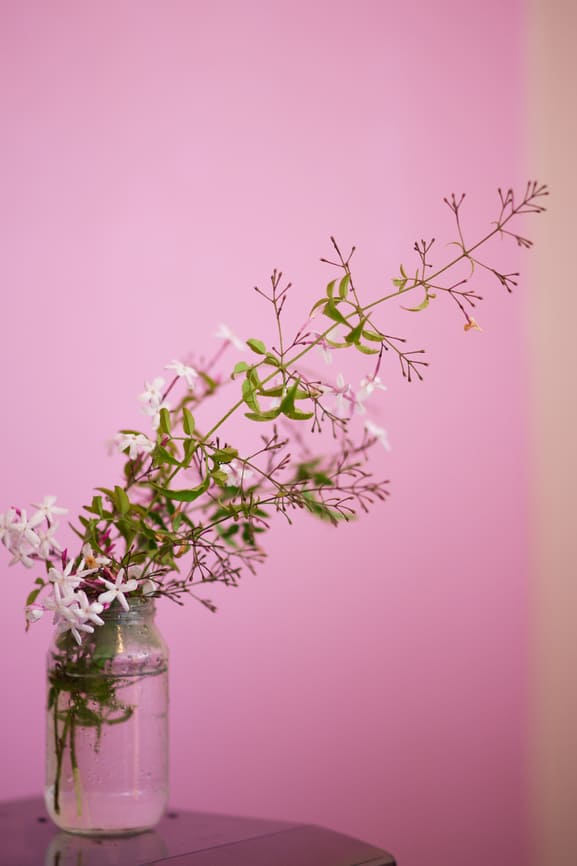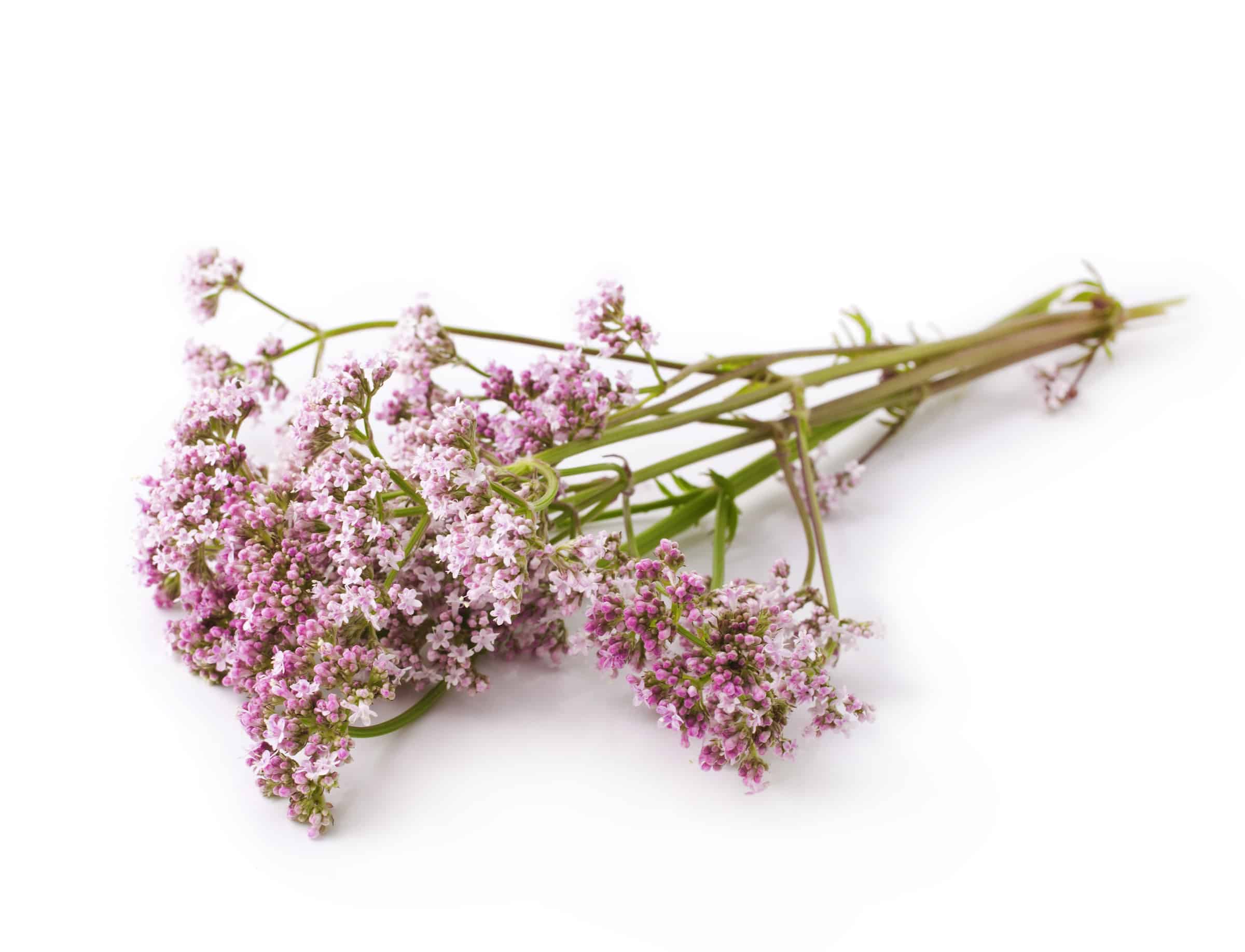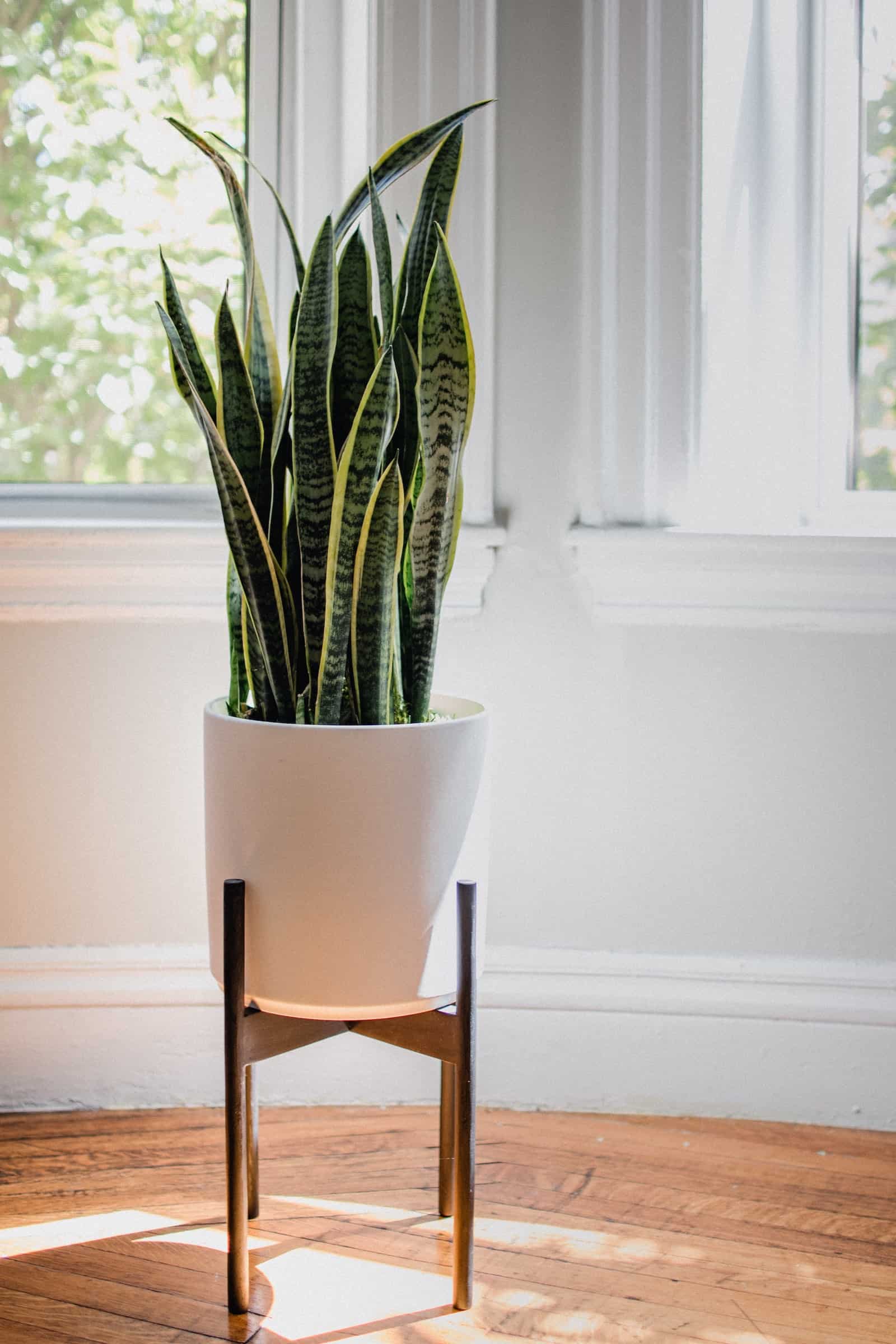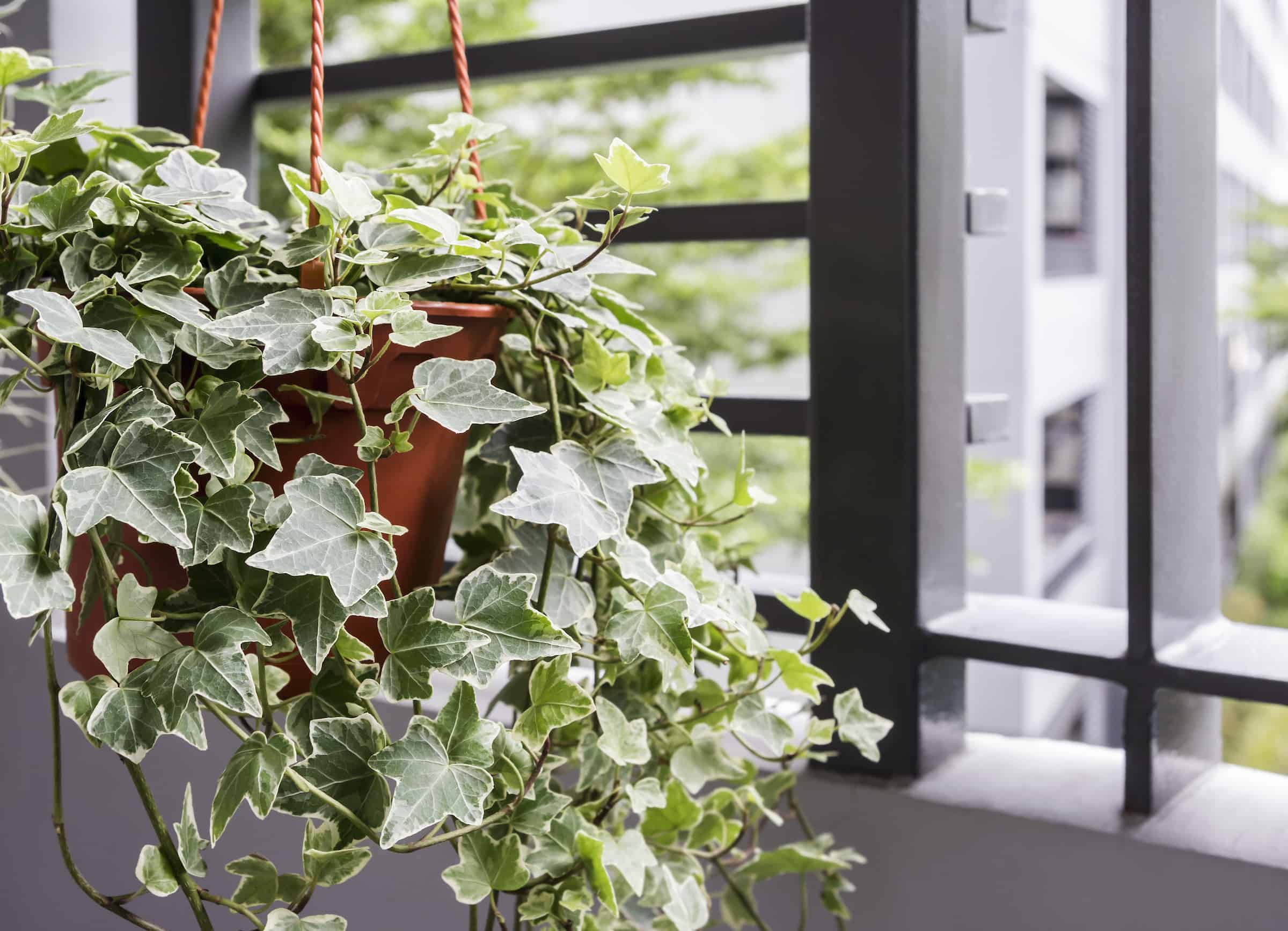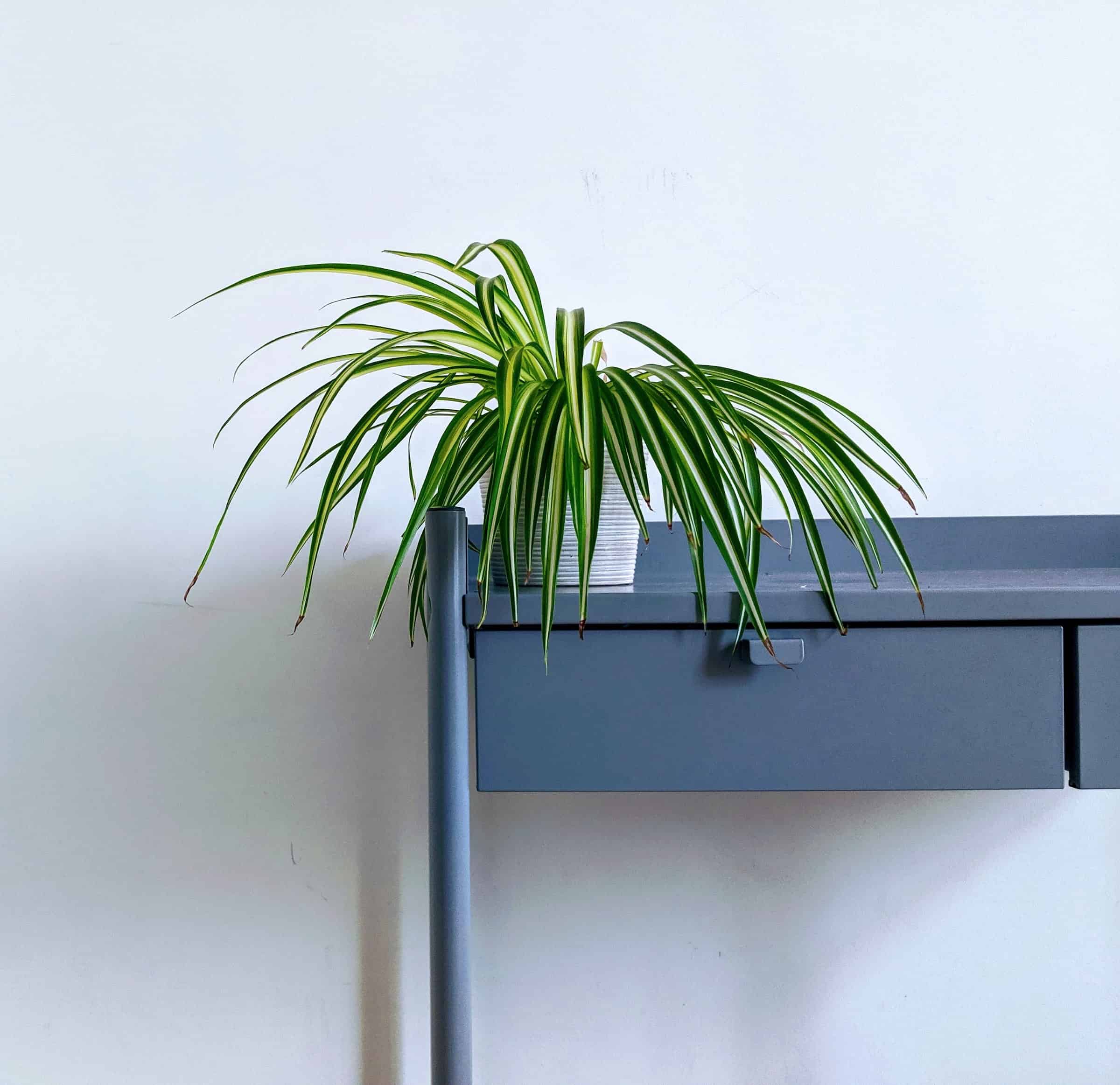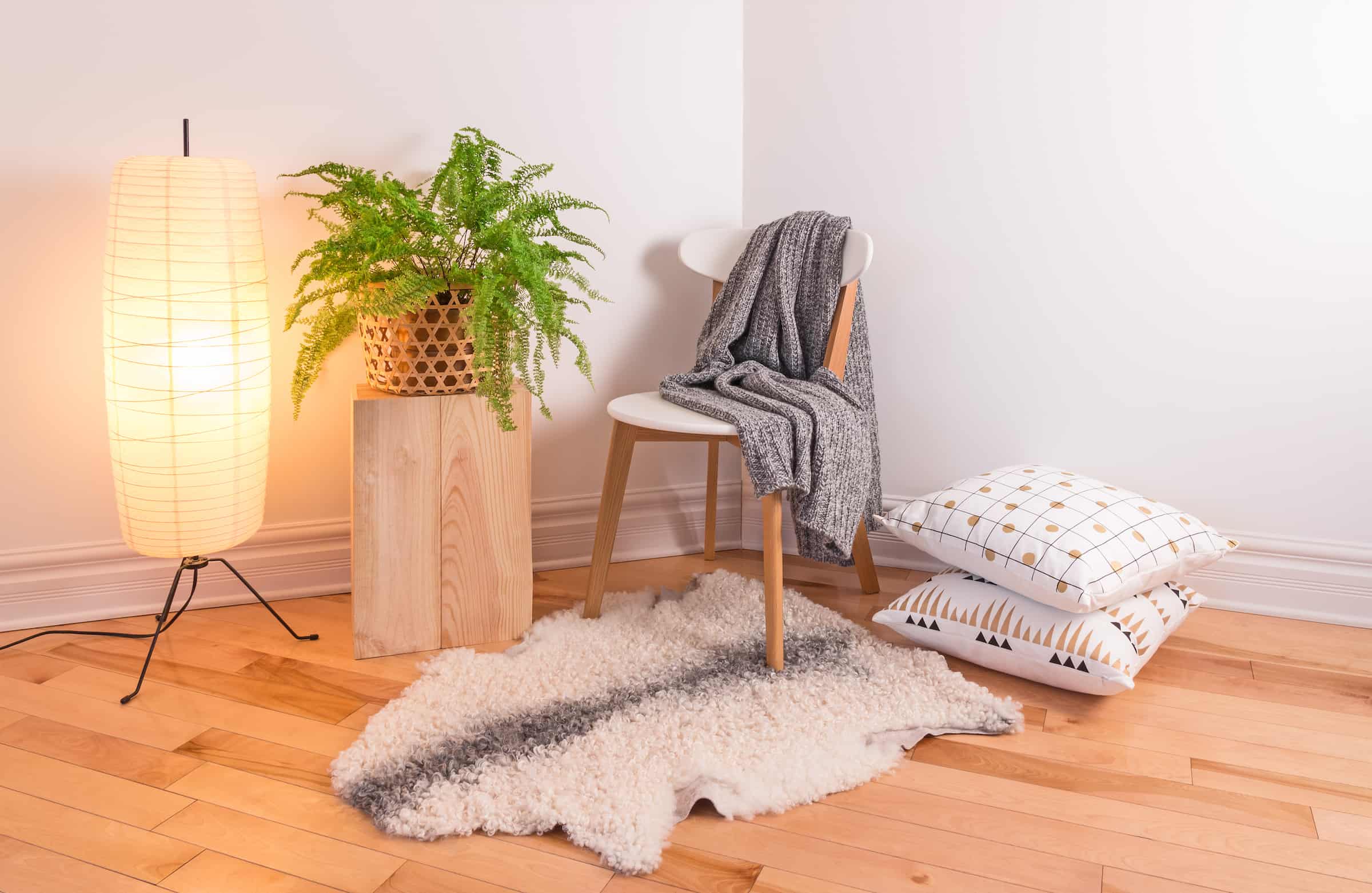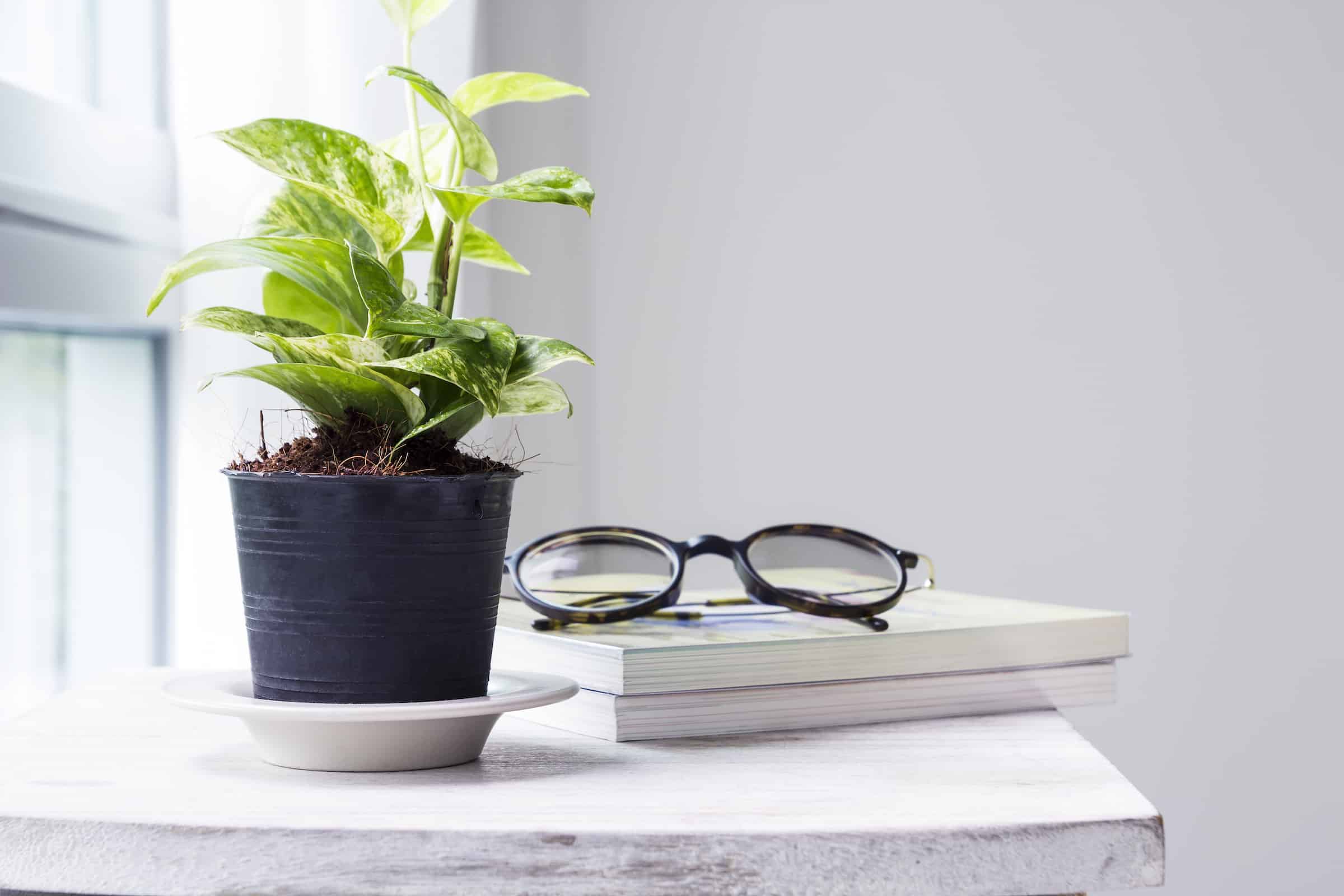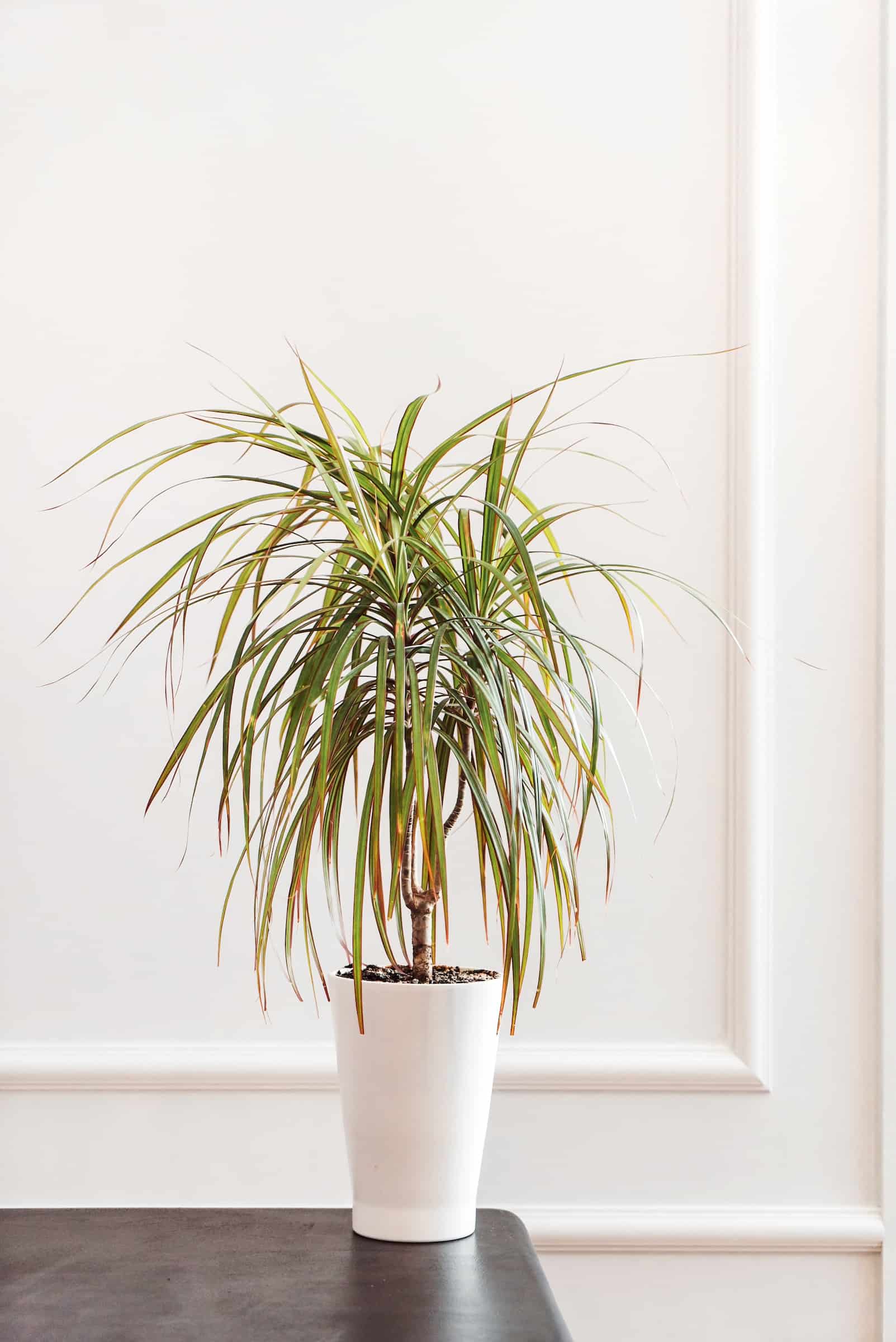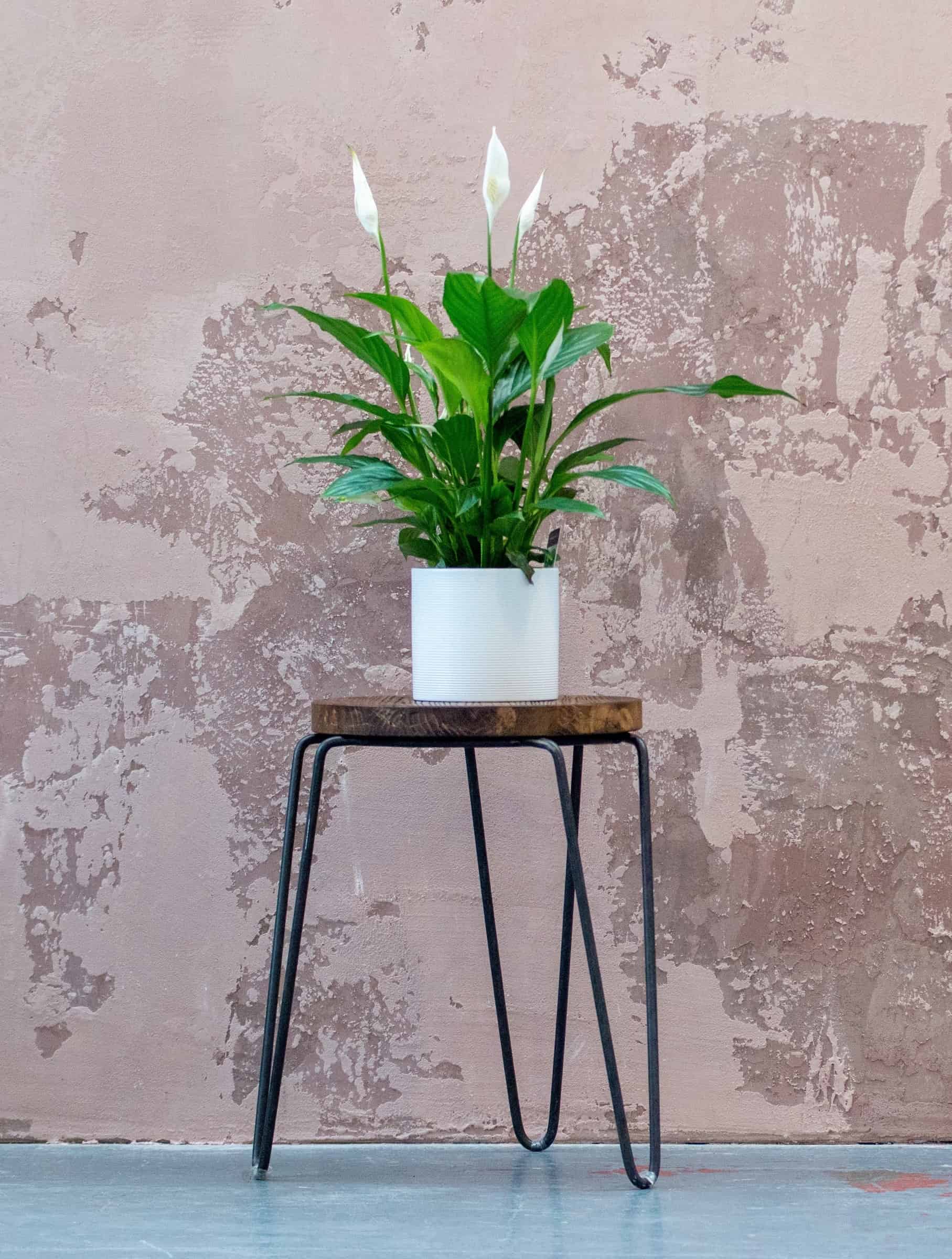11 Bedroom Air Purifying Houseplants That Help You Breathe And Sleep Better
If you have trouble sleeping, it can negatively impact your productivity, mood, energy and life quality. An effective method to get a good night’s sleep is to include some plants and flowers in your living space. As well as looking nice and bringing cheer to your home, a bit of greenery can have excellent purifying and relaxing benefits. This, in turn, will help you doze off and remain asleep until the following morning. Here are eleven air purifying plants for the bedroom that could make a big difference to your life:
1. Air Purifying Plants For Bedroom: Aloe Vera
Regarded as one of the best plants for improving air quality, Aloe Vera emits oxygen during the night that purifies the air — ensuring an uninterrupted slumber. This luscious plant has a distinctive appearance, with fleshy, stemless leaves. These green leaves have a white, speckly pattern. They have white spikes on their edges that make the plant stand out from other domestic plants. While Aloe Vera is perfectly safe for human beings, its toxicity level is moderate to mild for dogs and cats. Your pets might experience diarrhea, sickness, depression, tiredness, tremors and anorexia if they ingest it.
Health Benefits
This medicinal plant is ideal for people who like natural remedies for skin problems. The gel from Aloe Vera leaves can be applied straight onto your skin to counteract numerous conditions. Examples include frostbite, sunburn, cold sores, psoriasis and burns.
2. Air Purifying Plants For Bedroom: Jasmine
This tropical plant has a calming, gentle impact on the mind and body. Research has proven that it reduces levels of anxiety, resulting in better sleeping patterns. With its gorgeous ivory or pink blossoms, adding a Jasmine plant in the bedroom is ideal for indoor cultivation. Often, people put these plants in more than one bedroom and include them in other rooms of their home. They are fine for use in the garden as well.
Health Benefits
People have used Jasmine to cure ailments for centuries. In the south of Asia, women wear Jasmine flowers to decorate their hair. Creams made from these flowers are used to treat skin conditions, such as rashes and sunburn. Juices in Jasmine flowers are believed to replenish the skin with elasticity and moisture. This makes the skin look healthier by reducing the visibility of wrinkles. In addition, because this plant helps you to sleep better, you will be more productive and alert throughout the day.
3. Air Purifying Plants For Bedroom: Valerian
This flowering perennial plant has white or pink flowers – with a sweet scent – that bloom during the summer. Valerian roots have been used as tincture or tea for centuries, with Roman philosopher and physician Galen recommending it for sleeplessness. Perfume was made from Valerian blossoms in the sixteenth century as well. More recent studies have supported Galen’s endorsement of the Valerian plant. It’s one of the best indoor plants as just inhaling its aroma will send you to sleep fast, and help you to enjoy an uninterrupted rest.
Health Benefits
Valerian root might ease OCD symptoms and reduce stress related anxiety. Also, it might improve concentration levels in children and reduce hyperactivity. Early studies indicate that Valerian root might help with premenstrual syndrome, menopause, restless legs syndrome, painful menses; and with neurological conditions like Alzheimer’s disease.
4. Air Purifying Plants For Bedroom: Snake Plant
Adding a snake plant in the bedroom improves the quality of indoor air significantly. Better still, it is a sturdy, low maintenance plant, which is never a bad thing. The strapy, leathery leaves of this plant have evolved to withstand the severe West African terrain, where rain is infrequent and the soil is substandard.
The snake plant is notable in that, during the night, it takes in carbon dioxide and emits oxygen at the same time. You produce carbon dioxide naturally when you breathe. This results in higher quality air and a good night’s sleep. For pets, the plant is moderately toxic because it contains saponins, which are chemicals it produces to safeguard it from microbes, fungi and insects. The degree of toxicity, though, is reasonably small.
Health Benefits
Aside from eliminating carbon dioxide, the snake plant also gets rid of a range of damaging toxins. Examples include xylene, toluene, trichloroethylene, formaldehyde and benzene. Undoubtedly, this houseplant is one of the best for purifying indoor air to help your breathing.
5. Air Purifying Plants For Bedroom: Lavender
The Lavender plant has a unique appearance, with green/gray foliage and small spiraling purple flowers. Often, this plant will grow a few feet tall if enough space is available. Everyone loves lavender aromas. Also, it is arguably the most famous plant with regards to lowering stress levels and inducing sleep.
Lavender scent is known to reduce blood pressure and slow the resting heart rate. The plant contains a small quantity of linalool — a compound that is toxic to cats and dogs if ingested. Notwithstanding, it purifies the air effectively, so make sure you have no allergies that could make it unsafe to use.
Health Benefits
The bedroom is the best place to grow Lavender, due to its calming effect on your body. Research shows that babies cry less and sleep better after smelling Lavender, and that it also reduces anxiety in mothers. This will be welcome news to all expectant mums. Indeed, studies on Lavender reveal that it decreases REM (Rapid eye Movement) and increases light sleep for women, and that women tend to sleep for longer after smelling it. Men seem to be effected in the opposite way.
6. Air Purifying Plants For Bedroom: English Ivy
This perennial evergreen plant has been hailed since ancient Greek and Roman times, for a number of good reasons. The leaves on English Ivy plants are glossy and thick, with medium to dark green tones. Yellow or white veins run across these distinctive leaves. The most notable feature about this houseplant is that it benefits people who have breathing disorders, like COPD, bronchitis and asthma. It makes your airways relax naturally and stops you from coughing too much.
As a result, it is ideal to use an English Ivy plant in the bedroom to facilitate healthy sleeping patterns. Unfortunately, English Ivy does fall under the category of houseplants that are toxic to cats and dogs, if consumed. Intoxication symptoms might include excessive salivation, sickness, diarrhea or abdominal pain.
Health Benefits
In 2005, the US College of Asthma, Allergy and Immunology conducted an experiment on English Ivy. Over a twelve hour period, researchers used the plant to remove seventy-eight percent of airborne mold and ninety-four percent of airborne feces. Therefore, by filling your home with English Ivy, you can prevent mold from growing and lower the number allergens that could affect your breathing. For this reason, it is an excellent plant to use for a restful slumber.
7. Air Purifying Plants For Bedroom: Spider Plant
The Spider Plant is popular with many people who buy houseplants to improve their health. It’s one of my favorite small plants for the bedroom. It has an unmistakable appearance, with slender long leaves that emanate from its central crown. By and large, these leaves are green with a white border.
If you discover that your bedroom has a poor quality of air, you might want to grow a spider plant to improve it. These plants have air purifying properties and are known to eliminate airborne toxins from the rooms they are placed in. As well as making the air cleaner, Spider Plants absorb fumes and odors and sustain levels of oxygen in rooms. All of this helps to promote better sleep.
Health Benefits
Spider Plants rid your bedroom of carbon monoxide and formaldehyde. Formaldehyde is a poisonous, colorless gas that irritates the eyes, throat and nose. It is used in several domestic products, like particleboards, fabrics and paper products. For this reason, it is wise to include several of these houseplants in your property.
8. Air Purifying Plants For Bedroom: Boston Fern
Boston Fern plants are a common sight in people’s homes, due to the fact that they are easy to care for. These plants purify the air in properties and maintain humidity levels. Their clustered, fern-like leaves are long and green. All leaves have thin stems running through them, with lots of minuscule leaves running flat across the stems. Ferns like these will spread up to a few feet in length, when fully grown. The Boston Fern is good at eliminating airborne toxins, such as formaldehyde and xylene, which will help you to sleep better.
Health Benefits
Because this plant humidifies the environment naturally, it is highly effective at alleviating dry skin. If you run air conditioning in your property regularly, this is particularly beneficial. By adding a few of these Boston Fern house plants for your bedroom, you can keep enough moisture on your skin and in your bedroom.
9. Air Purifying Plants For Bedroom: Golden Pothos
The Golden Pothos is one of the simplest houseplants to grow. It’s also one of the best plants for bedroom air quality. Its shiny leaves are shaped like hearts, and its vining stems can grow a few feet long. Undoubtedly, if you lead a hectic life, you will appreciate this ivy-like plant. Its outstanding air purifying properties will improve your sleep quality significantly. Still, you don’t have to spend much time looking after it — just two hours of sun every morning and a bit of water each week will suffice. It is an excellent hanging plant as well — which makes it less invasive and ensures that its moderately toxic leaves do not come into contact with children or pets.
Health Benefits
The Golden Pothos purifies the air of benzene, carbon monoxide and formaldehyde, whilst simultaneously eliminating odors. This trait is particularly useful in parts of your property that have exposure to cleaning agents, paint fumes and car exhaust, etc. In addition, this plant can make your eyes less irritated after a long day staring at a screen.
10. Air Purifying Plants For Bedroom: Dracaena (species)
Various species of Dracaena are known plants for the bedroom to clean the air, which helps to combat insomnia. The US Horticultural Science Society reports that indoor air is twelve times more toxic than outdoor air in certain areas. Primarily, this due to the compounds in paint, clothes, construction materials and furniture.
Dracena plants can be grown easily and have strappy, long leaves with picturesque red marks. If you are unsure which type to try, search for ‘Tricolor’, ‘The Corn Plant’ (sometimes referred to as ‘Masangeana’) or ‘Janet Craig’. However, whatever variety you choose, be aware that every species thrives in similar environments — which is slightly moist soil, with bright to moderate indirect sunlight.
Health Benefits
Dracaena helps to get rid of benzene, formaldehyde, carbon dioxide and trichloroethylene from the air. These chemicals are associated with numerous health disorders, like respiratory conditions, kidney disease, migraines, marrow disease and anemia — to name just a few. Using Dracaena to eradicate these toxins will improve your breathing considerably. Also, it will help you to fight germs and maintain a healthy lifestyle.
11. Air Purifying Plants For Bedroom: Peace Lily
Although these plants have a luxurious appearance, you do not have to do much to look after them. For best results, you should expose them to bright light, however they can tolerate moderate to low light as well. Along with being nice to look at, Peace Lilies help to remove damaging trichloroethylene, formaldehyde and benzene toxins. Weekly watering and a nice position in the shade, away from children and pets, is enough to care for these plants. That is a small price to pay for an uninterrupted sleep.
Health Benefits
These stunning flowers emit moisture that increases the humidity of rooms by up to five percent. This helps to suppress airborne toxins that can cause allergies. In addition, it can offer relief for dry throats and noses that stop you from sleeping soundly.
How to Maintain Your Houseplants
Many of the houseplants listed above don’t require a lot of maintenance. However, there are a few things you should do regularly, to ensure that they stay healthy and deliver the desired benefits.
- Don’t forget to mop the leaves each week, otherwise the plants will not do their job effectively.
- Also, you should feed the plants with good quality natural fertilizer. This will improve their disease resistance, increase their growth potential and result in larger blooms.
- When watering your houseplants, pour in the water until it runs out of the gap at the base of the plant pot. Either that, or keep pouring until the soil stops absorbing the water. If pools of water form on the soil, because it can’t soak up the liquid fast enough, stop watering straightaway.
Finally, your air purifying plants will need a certain amount of sunlight to prosper. This is why windowsills are an excellent place to keep them. If your windowsills are too small, however, there are alternative options. Place them on a cart or table near to a window, or hang your plants somewhere that gets lots of natural light.
Houseplants take a while to adapt to their environment, so it is wise not to move them about too much. In particular, you should avoid putting them anywhere that is noticeably colder or hotter than their previous location. Start by adding two or three plants initially, then – after you see the difference they make – you will want to include more in your tranquil living space.
